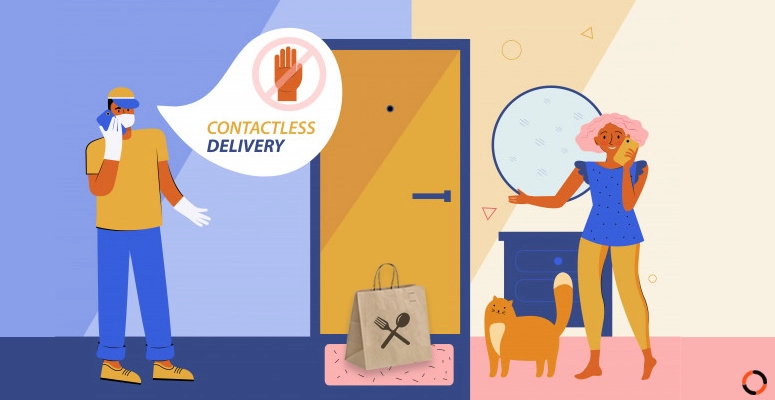How Contactless Delivery Systems Are Transforming the Restaurant Industry?
- Restaurant Food Ordering System
June - 25 - 2020

Millions of hotels and restaurants have had to adapt to new challenges in recent times. In response, many have turned to takeaway and food delivery services to keep their businesses running. Operators are increasingly relying on online food ordering and delivery systems to sustain their operations. A key shift has been the move from traditional delivery methods to a Contactless Delivery System. This innovative approach allows businesses to continue serving their customers while maintaining safety and distance.
With the Contactless Delivery System, restaurants can efficiently deliver food directly to customers' doorsteps, ensuring a seamless and safe experience for both the business and the consumer. This shift is helping hotels and restaurants stay operational and meet customer needs while minimizing physical interaction.
Understanding the Contactless Delivery System Process
The Contactless Delivery System enables safe and efficient food delivery by minimizing physical interaction between staff and customers. Below is the process:
The Food Ordering Process
Consumers place food orders via the web application, mobile site, or mobile application. They should choose no-contact delivery during checkout before submitting the online order. They can also add comments for the driver in the instruction box. This service is only available for food orders with online payments. The online food ordering system encourages consumers to use online payment to maintain distance between the customer and the driver. If a consumer does not have access to online payment, they can pay with cash. Consumers who select cash on delivery will not be eligible for the no-contact delivery service.
Contactless Delivery
The rider will place the food on a clean surface at a location where the consumer has instructed. He will call the consumer or ring the doorbell to notify them about the food dispatch. The rider will stand two meters away. The food ordering system adheres to the distancing concept in this way. Once the consumer picks up the food, the driver will leave. Some food delivery apps allow the driver to take a photo of the food near the doorstep. The driver updates the photo in the app, which is then sent to the consumer immediately. After seeing the photo, the consumer can pick up the food. This ensures that online orders remain untouched from the kitchen to the consumer's doorstep.
Precautionary Measures
Eating establishments are making efforts to ensure each customer feels safe. They are cleaning kitchen storage, cooking platforms, doorknobs, door handles, dining areas, and rider bags at regular intervals. Riders avoid using lifts and instead utilize the escalator. If there is no alternative, the driver will check the lift to ensure it is not crowded and will sanitize his hands after pressing the buttons. If the rider is delivering to restricted areas, they should consult local authorities and follow the necessary guidelines for the delivery.
Customer Trust
Hotels have implemented handwashing procedures, daily health checks, and the use of face masks for staff and drivers. Employees are reminded at the entrance and exit points of the hotel to maintain strict health protocols. Consumers are advised to ensure food safety by reheating or microwaving the food at high temperatures before consumption. These safety measures help build trust in the minds of customers.
Marketing
Restaurateurs should highlight the Contactless Delivery System through their web application, emails, social media accounts, and other marketing channels. They should provide a detailed description of this service and all steps of the dispatch process. They must encourage consumers to dispose of recipe boxes and packaging immediately. New promotional activities should be launched to keep up with changing consumer demands.
Conclusion
The Contactless Delivery System is transforming the way restaurants and hotels serve their customers by ensuring safe food delivery. The Kopatech - online food ordering system includes all the above processes built in, enabling businesses to easily implement contactless delivery while maintaining customer satisfaction and safety.
Categories
Recent Posts
- Solving Last-Mile Delivery Challenges in Restaurant Food Deliveries
- How to Start a Successful Multi Restaurant Delivery Service: A Step-by-Step Guide
- Tips and Ideas for Making Your Fast Food Restaurant More Environmentally Friendly
- A Brief Guide to Choosing the Right Takeaway Online Ordering System for Your Restaurant
- Essential Features of a Cafe POS System: A Must-Have Guide for Cafe Owners
- Mastering The Best Restaurant Advertising Campaigns Detailed Guide
- Complete Self-write Restaurant Business Plan Guide for Entrepreneurs
- 9 Best Restaurant Advertising Ideas to Elevate Your Business and Profits
- A Comprehensive Guide on How to Open a Food Truck Business and Succeed
- 5-Step Guide for Social Media Marketing for Restaurants
